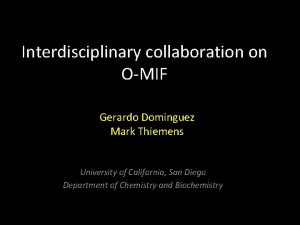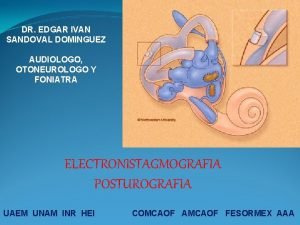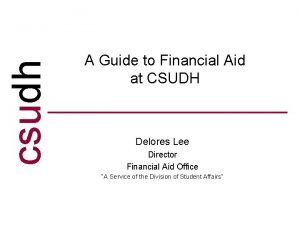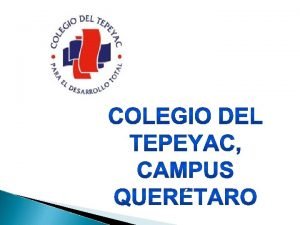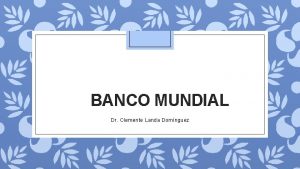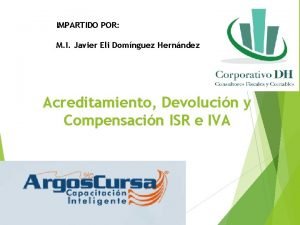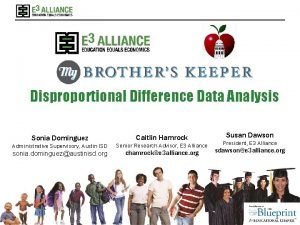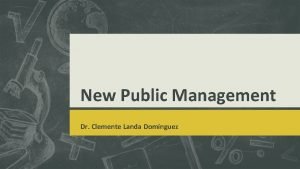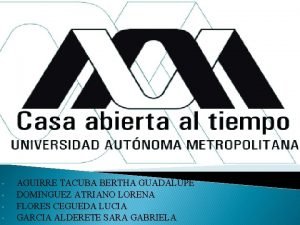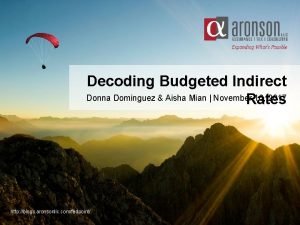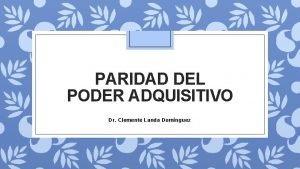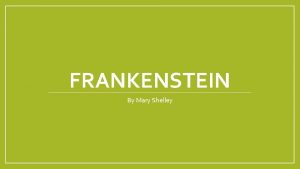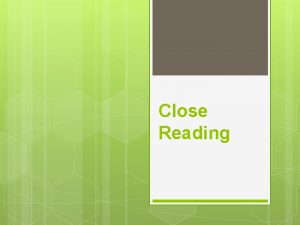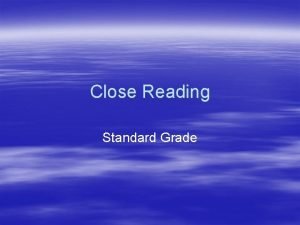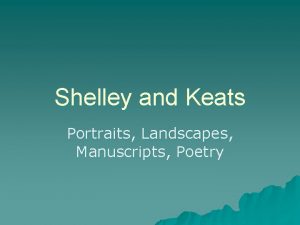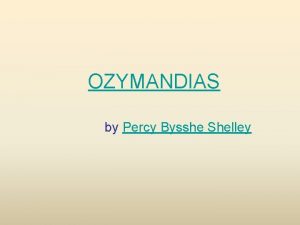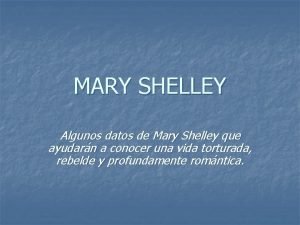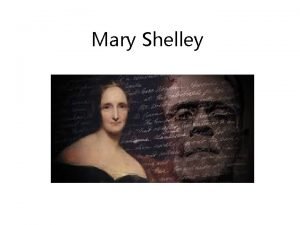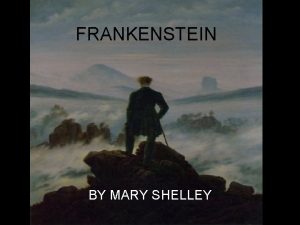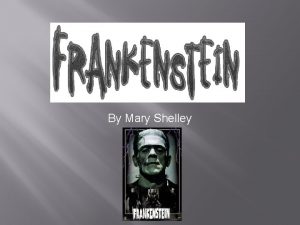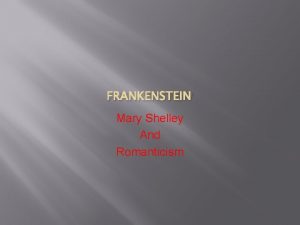CLOSE READING Shelley Dominguez WHAT IS CLOSE READING















- Slides: 15

CLOSE READING Shelley Dominguez

WHAT IS CLOSE READING? • Close reading is a form of guided instruction that focuses on multiple readings and rich discussion about complex text. The teacher uses text-dependent questions to drive the discussion and to provide students with authentic purposes for re-reading. It isn’t uncommon for students to read a passage once, read it quickly and rather superficially, and then announce, “I’m done!” Sophisticated readers understand that the nature of some texts requires that they be read more than once. Even with less dense text, it is essential to glean the details at both the explicit and implicit levels in order to fully understand the reading. So first and foremost, close reading requires a willingness to return to the text to read part or even all of it more than once. Close reading may extend over several lessons or several days, each time deepening students’ understanding of the text (Fisher & Frey, 2014).

• Close Reading of text involves an investigation of a short piece of text, with multiple readings done over multiple instructional lessons. Through text-based questions and discussion, students are guided to deeply analyze and appreciate various aspects of the text, such as key vocabulary and how its meaning is shaped by context; attention to form, tone, imagery and/or rhetorical devices; the significance of word choice and syntax; and the discovery of different levels of meaning as passages are read multiple times (Brown & Kappes, 2012).

• It is an interaction between the reader and the text (Douglas Fisher in the online video interview, “Close Reading and the Common Core State Standards, : April 3, 2012). • It is about making careful observations of a text and then interpretations of those observations (Patricia Kain for the Writing Center at Harvard University, 1998). • It involves rereading: often rereading a short portion of a text that helps a reader carry new ideas to the whole text (Kylene Beers and Robert Probst in Notice and Note, 2013).

FEATURES OF CLOSE READING Complex Texts Rereading for a Purpose Avoidance of Frontloading Annotation Focused Discussion/Dialogic Processes Text-dependent Questioning*

WHY CLOSE READING NOW? • ACT Policy Alert (2006): Clearest differentiator between those ready for collegelevel reading and those that are not is students’ ability to read complex text • Common Core State Standards for the English Language Arts, College and Career anchor standards, k-12 Key Ideas and details 1. Read closely to determine what the text says explicitly and to make logical inferences from it; cite specific textual evidence when writing or speaking to support conclusions drawn from the text (National Governors Association Center for Best Practices, 2010)

BACKGROUND • • • 1940 s- university students of literary criticism “New Criticism”- only discuss the text written on the page, not time period Opposing viewpoints- reader experience was important- Rosenblatt’s transaction theory Both emphasized reader connecting deeply with the text Recently, concern over drifting away from the text itself Need for both

NOTES ABOUT COMPLEX TEXT • Cannot just assign harder texts and expect students to learn. • Dimensions of Text Complexity: Levels of Meaning, Structure, Language Convention and Clarity, Knowledge Demands • Less complex- To build stamina (like lifting smaller weights) • More complex- To build strength (heavier weights- need spotter!)

EXAMPLES OF TEACHING METHODS • Fisher and Frey: Close Reading Protocol • Beers and Probst: Notice and Note Signposts • Lehman and Roberts: Lenses, Patterns and New Understandings

FISHER AND FREY: A CLOSE READING PROTOCOL • • • Select a Suitably Complex Text Establish a Purpose for Reading (Clear Learning Targets- Don’t Frontload) First Reading: Go for the Flow (General Understanding- Discuss Main Ideas) Second Reading: Read with a Pencil (Annotate for Purpose) Discussion: Partner Talk to Check Meaning Discussion of the Text with Text-Dependent Questions (Progression of Thinking) Subsequent Readings: Teacher-Led Shared Reading and Think-Aloud (optional) Subsequent Readings: Interrogation of the Text (optional) Performance Tasks: After Reading (debate, writing, etc…)

KYLENE BEERS AND ROBERT PROBST: CLOSE READING SIGNPOSTS Look for: Fiction Nonfiction Contradictions Contrasts and Contradictions Words of the Wiser Quoted Words Tough Questions Extreme or Absolute Language Aha Moments Numbers and Stats Again and Again Word Gaps Memory Moment from Notice & Note 2013 http: //www. heinemann. com/shared/i. Player. aspx? id=17970

CHRISTOPHER LEHMAN & KATE ROBERTS: LENSES, PATTERNS AND NEW UNDERSTANDINGS Process 1. 2. 3. Read through lenses. Use lenses to find patterns. Use the patterns to develop a new understanding. Topics/Skills • • • Text Evidence Word Choice Text Structure Point of View and Argument Reading Across Texts from Falling in Love with Close Reading: Lessons for Analyzing Texts- and life

JIGSAW EXAMPLES The Very Hungry Caterpillar by Eric Carle – Fisher and Frey- Protocol- focus on text dependent questions Crash by Jerry Spinelli- Beers and Probst- Aha Moment Signpost- study and present the lesson Kool Koast Kamp by C. T. Gilliam- advertisement- Lehman and Roberts- Word Choice - explain lenses, patterns, and new understandings and give examples 10 minutes to read through the lesson 10 minutes to present the lesson

CONCLUSION • Which method do you think would work best with the students you are currently teaching? • What challenges do you foresee in teaching using a close reading lesson? • What rewards do you think you will gain from utilizing one of these methods in the classroom?

REFERENCES
 Gerardo dominguez aguirre
Gerardo dominguez aguirre Agustina dominguez
Agustina dominguez Optoquinetico
Optoquinetico Fafsa csudh
Fafsa csudh Valerie dominguez facebook
Valerie dominguez facebook Maria eugenia hernandez dominguez
Maria eugenia hernandez dominguez Clemente landa domínguez
Clemente landa domínguez Javier eli dominguez hernandez
Javier eli dominguez hernandez Father dominguez and escalante
Father dominguez and escalante Dr sonya dominguez
Dr sonya dominguez Clemente landa domínguez
Clemente landa domínguez Csudh mascot
Csudh mascot Gerardo dominguez aguirre
Gerardo dominguez aguirre Aisha amian
Aisha amian Clemente landa domínguez
Clemente landa domínguez Ocean currents waves and tides
Ocean currents waves and tides
